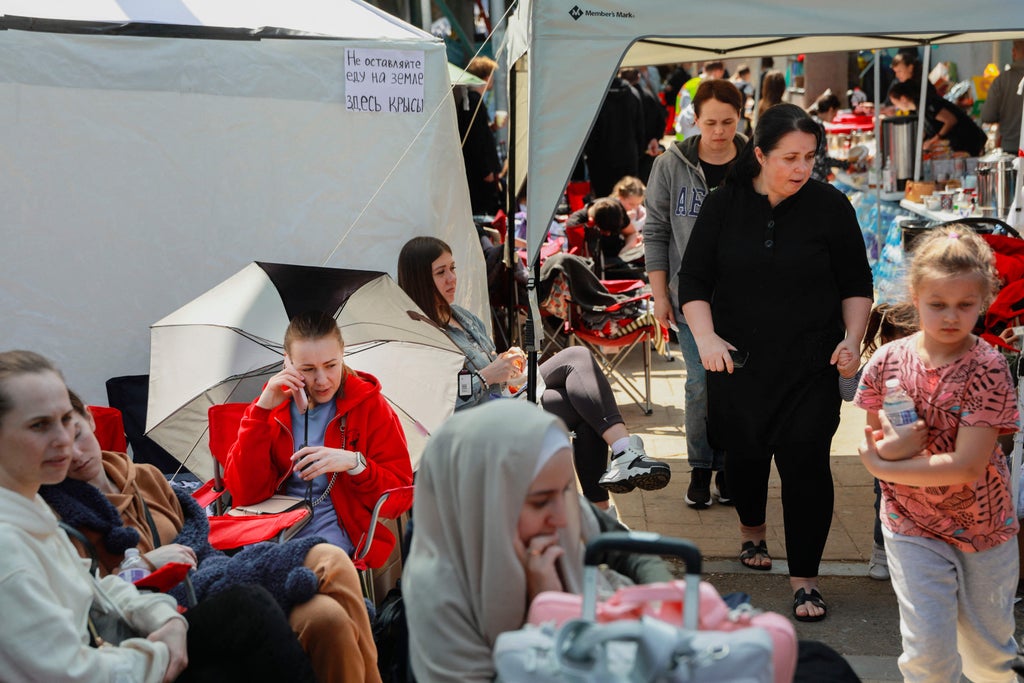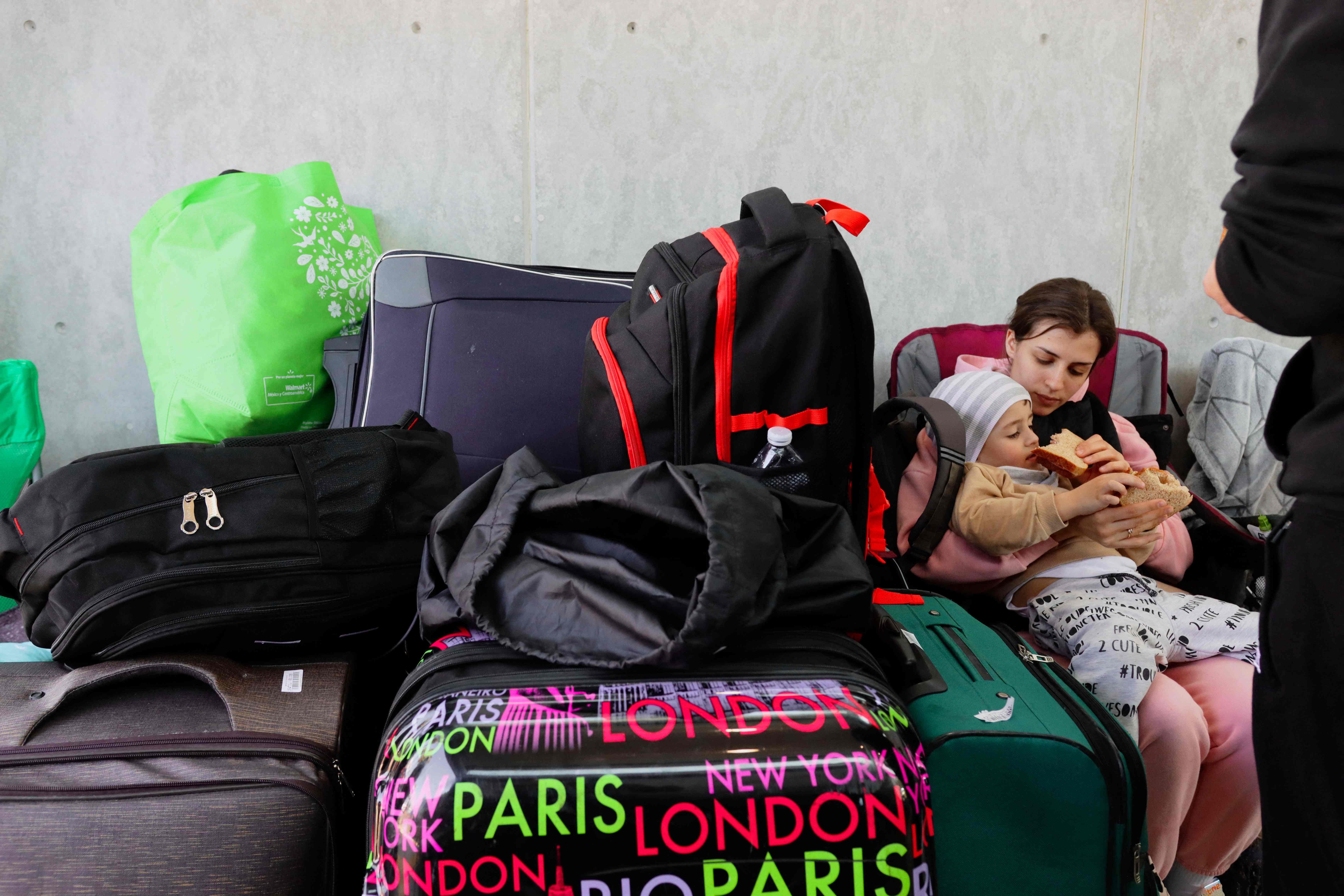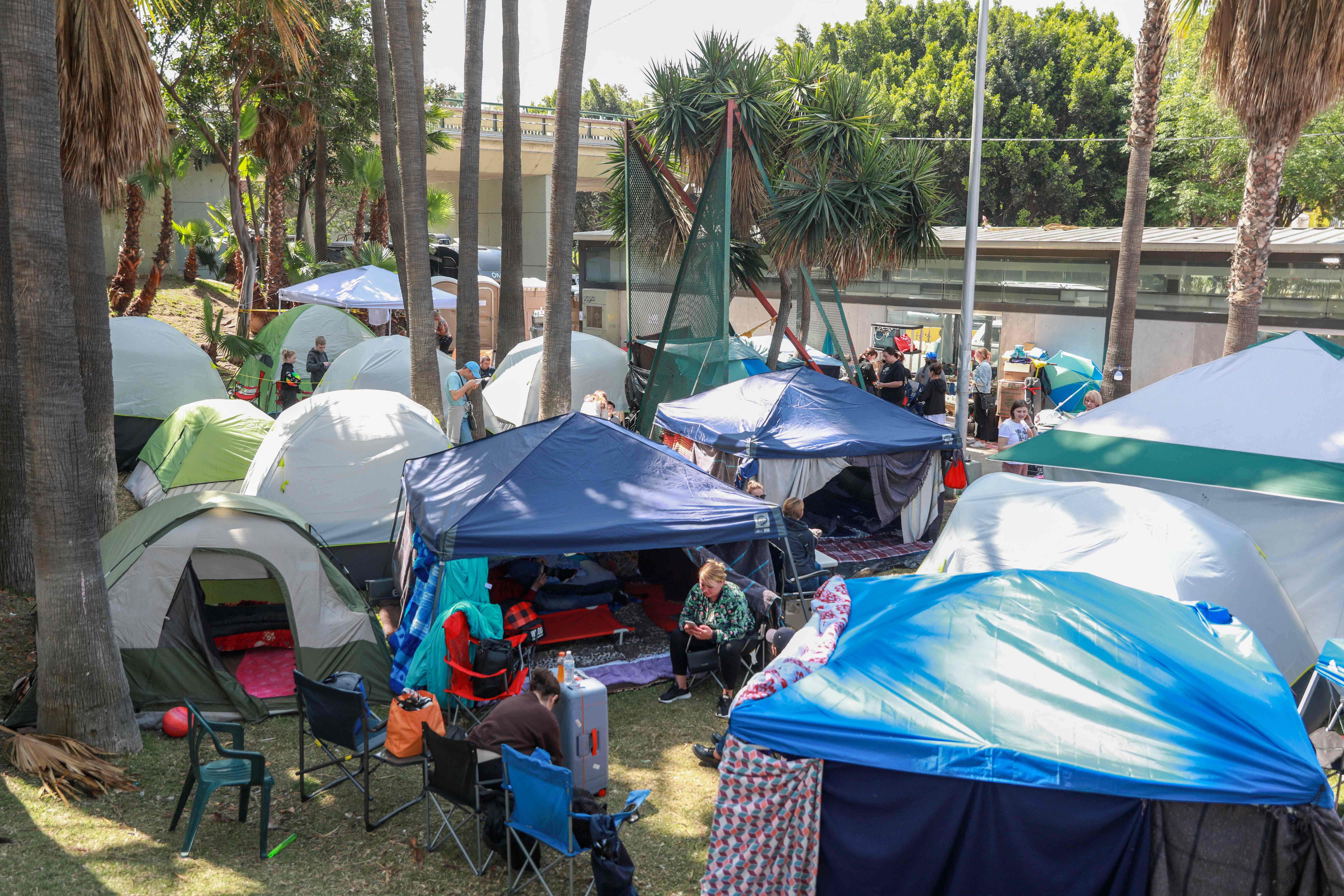
After Iryna Merezhko persuaded her sister in Ukraine that her young nephew should join her in Los Angeles to wait out the war, she travelled halfway around the globe to pick him up.
“I told him it would be a California vacation,” she recalled. “We would go to Disneyland, Universal Studios, the beach.”
The boy, Ivan Yereshov, 14, made it with her to Tijuana, Mexico, early this month, joining thousands of Ukrainians waiting at the border for permission to enter the United States.
To be on the safe side, Merezhko carried a notarized power of attorney attesting that Ivan had been handed over into his aunt’s care. But an officer informed them that Ivan could not enter with his aunt — because she was not his parent.
“They told us we would be separated for one or two days,” recalled Merezhko, who said that she embraced Ivan as his initial enthusiasm dissolved into dismay.
Ten days went by before she would learn his whereabouts.

Dozens of Ukrainian children have been separated from relatives, friends or older siblings with whom they have travelled to the southern border under a law designed to prevent migrant children from being trafficked. In effect since 2008, the law requires U.S. border authorities to place “unaccompanied minors” in government shelters, where they must remain until their guardians have been screened and approved.
The brunt of the law has been felt by Central American children, the largest group of minors to reach the border in recent years, and who are often fleeing gang violence. But those children typically are aware of the policy and know that they will be taken into temporary custody. For Ukrainian children, the separation from their caretakers has been an unexpected, shocking twist in their escape from a war zone.
The separations are different from those in 2018, when the Trump administration intentionally removed children from migrant parents to discourage border crossings; the punitive measure also resulted in children being sent to government shelters.
“Imagine — some of these children’s parents died or are fighting; they’re traumatized from the war and the journey,” said Erika Pinheiro, a lawyer with Al Otro Lado, a migrant support group that works with asylum-seekers in Tijuana, a border city that is opposite San Diego. “Then they get separated from family, without understanding why, and sent to a shelter where staff don’t speak their language.”
Pinheiro acknowledged that it was vital to protect children from potential traffickers, but she said that more careful screenings at the border could alleviate the need for traumatic separations.
“There are people out there who don’t have the children’s best interest at heart,” she said. “There are also lots of extended family who should be legitimately processed.”
U.S. authorities have not released figures on how many Ukrainian children have been separated from caregivers, but volunteers working with the refugees said they have counted at least 50. Up to 20 children have lately been arriving daily in Tijuana with someone other than a parent, they said. Often these children have a father who could not leave the country because men must support the war effort and a mother who could not travel. Their parents entrusted someone else to ferry them to the United States.
The Department of Homeland Security said in a statement that the anti-trafficking law defines any child who is not with a parent or legal guardian as “unaccompanied,” and requires that the child be transferred to a government shelter for care and custody, and be screened for signs of human trafficking.

“Any potential guardian must, by law, be vetted prior to reunification to protect against trafficking and exploitation of vulnerable children.”
Migrant advocates concede there is a risk of children becoming vulnerable to trafficking and exploitation amid the chaos of war, but say U.S. authorities are enforcing the law inconsistently, sowing confusion and heartache. Sometimes a child travelling with an adult sibling has been removed to a shelter, but not always. Many children have been separated from aunts, grandparents or friends; others have been released to continue on with them.
Last month, Molly Surazhsky, the daughter of Ukrainian immigrants, escorted Liza Krasulia, 17, whose mother is a close family friend, from where she had escaped the war in Poland to the southern border.
Surazhsky, of Brooklyn, said she had consulted an immigration lawyer in New York who said that she did not foresee any problems. They carried a notarized letter from the parent giving Surazhsky authority to care for Liza.
But on March 30 at the border, officials told them that they would have to hold the girl for up to two days.
“They said, ‘She will be treated better than we are,’” Surazhksy recalled.
Liza was shocked and began to sob.
“I told her, ‘Don’t worry. I’m not going anywhere without you.’”
After checking into a hotel in San Diego, Surazhsky got a call from Liza, who by then was even more distraught. Officers had confiscated her phone, baggage, book — and shoelaces. She was sharing a cell at the border with 25 women and children from Ukraine, Russia and other countries, all trying to sleep on the floor with only flimsy foil blankets to cover them.
A few days passed before Surazhsky learned that Liza had been transferred to a migrant children’s shelter in the Bronx.
She submitted 40 pages of paperwork and fingerprints, and waited for approval to officially sponsor her.
On Monday, she was informed that Liza would be released from the shelter the following day, three weeks after they had crossed the border.
“While I understand the necessity of vetting caretakers, there has to be a better way for the government to do this without inflicting more trauma on the children,” said Surazhsky, a textile artist. “They are making kids feel like prisoners.”
Casey Revkin, a co-founder of the nonprofit Each Step Home, which helps migrant families navigate the reunification process, said that for years Central American children have been unnecessarily removed at the border from grandparents, adopted parents and siblings.
“The government could send social workers to the border to verify the familial relationship and avoid the trauma of separating these children, who have gone through so much, from their caregivers,” Revkin said.
Pinheiro pointed out that during the Afghan evacuation, the U.S. government issued a directive that instructed authorities to allow children to remain with “nonparental caregivers” with whom they had entered the country, rather than be transferred to shelters.
The New York Times







